Navigation
Install the app
How to install the app on iOS
Follow along with the video below to see how to install our site as a web app on your home screen.

Note: This feature currently requires accessing the site using the built-in Safari browser.
More options
You are using an out of date browser. It may not display this or other websites correctly.
You should upgrade or use an alternative browser.
You should upgrade or use an alternative browser.
What's so special with this film, if anything?
- Thread starter Axel
- Start date
- Joined
- Feb 5, 2004
- Messages
- 21,168
- Reaction score
- 110
- Location
- North Central Illinois
- Website
- corryttc.blogspot.com
- Can others edit my Photos
- Photos NOT OK to edit
I just bought some of that. It is process C-41, so no special developing...not sure yet how good it is exactly as I haven't had em developed yet. I'll let ya know soon! 
Axel
TPF Noob!
core_17 said:I just bought some of that. It is process C-41, so no special developing...not sure yet how good it is exactly as I haven't had em developed yet. I'll let ya know soon!
And what is C-41?
- Joined
- Feb 5, 2004
- Messages
- 21,168
- Reaction score
- 110
- Location
- North Central Illinois
- Website
- corryttc.blogspot.com
- Can others edit my Photos
- Photos NOT OK to edit
Um...it means you can get it developed anywhere...drugstores and stuff. It's the kind you can get developed in a 1-hr lab.
Axel
TPF Noob!
Thanks core_17!
What I wonder too is what is the advantage with this film over others that are also ISO 100, but cheaper...
What I wonder too is what is the advantage with this film over others that are also ISO 100, but cheaper...
- Joined
- Jun 21, 2004
- Messages
- 9,468
- Reaction score
- 100
- Location
- TX
- Website
- fatephoto.com
- Can others edit my Photos
- Photos OK to edit
Well, I have no personal experience with this film, but it appears to be marketed to professionals, so perhaps less grain and better enlargements? I would say that if you aren't shooting professionally you wouldn't see much difference from regular film.
From the website:
KODAK PROFESSIONAL ULTRA COLOR films offer vibrant color saturation while maintaining exceptional skin tones, making them the ideal choice for a range of applications including fashion, advertising, editorial, travel, and nature. Featuring extremely fine grain, these films are the perfect choice for enlargements or for scanning negatives and integrating images into digital workflows. The ULTRA COLOR films are available in both 100 and 400-speeds to allow flexibility across lighting conditions.
From the website:
KODAK PROFESSIONAL ULTRA COLOR films offer vibrant color saturation while maintaining exceptional skin tones, making them the ideal choice for a range of applications including fashion, advertising, editorial, travel, and nature. Featuring extremely fine grain, these films are the perfect choice for enlargements or for scanning negatives and integrating images into digital workflows. The ULTRA COLOR films are available in both 100 and 400-speeds to allow flexibility across lighting conditions.
Axel
TPF Noob!
AlisonS said:Well, I have no personal experience with this film, but it appears to be marketed to professionals, so perhaps less grain and better enlargements? I would say that if you aren't shooting professionally you wouldn't see much difference from regular film.
From the website:
KODAK PROFESSIONAL ULTRA COLOR films offer vibrant color saturation while maintaining exceptional skin tones, making them the ideal choice for a range of applications including fashion, advertising, editorial, travel, and nature. Featuring extremely fine grain, these films are the perfect choice for enlargements or for scanning negatives and integrating images into digital workflows. The ULTRA COLOR films are available in both 100 and 400-speeds to allow flexibility across lighting conditions.
Thanks! That is good to know. I may as well go with a cheaper film then...
The only thing I don't like is that I find that all the good photo stores on the web are located in NY, where I live and that means tax! Is there any other good photo shop on the web that is NOT located in NY?
Thanks
Patrick
TPF Noob!
- Joined
- Oct 2, 2003
- Messages
- 562
- Reaction score
- 0
- Location
- Xenia, OH
- Website
- www.kylesphotography.com
- Can others edit my Photos
- Photos NOT OK to edit
Sounds kinda like Fuji Reala.
If it is it's worth the extra bucks.
Tighter grain and the color saturation is AMAZING.
You'll notice a big difference is your shooting the run of the mill wal-mart stuff now.
If it is it's worth the extra bucks.
Tighter grain and the color saturation is AMAZING.
You'll notice a big difference is your shooting the run of the mill wal-mart stuff now.
ksmattfish
Now 100% DC - not as cool as I once was, but still
- Joined
- Aug 25, 2003
- Messages
- 7,019
- Reaction score
- 36
- Location
- Lawrence, KS
- Website
- www.henrypeach.com
- Can others edit my Photos
- Photos NOT OK to edit
Axel said:It's about the double price from many others and I wonder if there is anything special with it that makes it so much more expensive...
Supply and demand and marketing. They make and sell a whole lot more consumer films. They make less and sell less pro films. $5.19 a roll for pro film is cheap; I usually expect to pay $6+ for pro color films.
ksmattfish
Now 100% DC - not as cool as I once was, but still
- Joined
- Aug 25, 2003
- Messages
- 7,019
- Reaction score
- 36
- Location
- Lawrence, KS
- Website
- www.henrypeach.com
- Can others edit my Photos
- Photos NOT OK to edit
Brand "X"
This is the standard manufacturer description of almost all color films: vibrant colors! great skin tones! fine grain! the perfect film for fashion, advertising, editorial, travel, nature, kid's b-day parties, sports, weddings, portraits, travel, vacations, porno, night photography, day photography, flash photography, digital photography, etc...
Don't believe the hype. Shooting more cheap film will do more to improve your photography than shooting less expensive film. Sure I buy pro films, when someone else is paying for it. For my personal work I'm completely happy with $2 a roll Kodak or Fuji from Walmart. There are plenty of crappy films out there, but price is no way to judge. You have to do that with your eyeballs.
offers vibrant color saturation while maintaining exceptional skin tones, making them the ideal choice for a range of applications including fashion, advertising, editorial, travel, and nature. Featuring extremely fine grain, these films are the perfect choice for enlargements or for scanning negatives and integrating images into digital workflows.
This is the standard manufacturer description of almost all color films: vibrant colors! great skin tones! fine grain! the perfect film for fashion, advertising, editorial, travel, nature, kid's b-day parties, sports, weddings, portraits, travel, vacations, porno, night photography, day photography, flash photography, digital photography, etc...
Don't believe the hype. Shooting more cheap film will do more to improve your photography than shooting less expensive film. Sure I buy pro films, when someone else is paying for it. For my personal work I'm completely happy with $2 a roll Kodak or Fuji from Walmart. There are plenty of crappy films out there, but price is no way to judge. You have to do that with your eyeballs.
- Joined
- Dec 16, 2003
- Messages
- 33,896
- Reaction score
- 1,853
- Location
- Edmonton
- Website
- www.mikehodson.ca
- Can others edit my Photos
- Photos NOT OK to edit
When shooting color negative film, I would think that the person & machine doing the prints would be a bigger factor in how the prints look.
I have read that it's a good idea to use a film that your lab is familiar with. If you buy a "professional" film and take it to wal-mart to get developed....your prints will probably look like everything else done there.
I have read that it's a good idea to use a film that your lab is familiar with. If you buy a "professional" film and take it to wal-mart to get developed....your prints will probably look like everything else done there.
Karalee
hOtLiPs!
- Joined
- Feb 22, 2004
- Messages
- 3,851
- Reaction score
- 48
- Location
- Here....there....everywhere
- Website
- www.shuttervisions.com
- Can others edit my Photos
- Photos NOT OK to edit
You can save yourself some money if you can force yourself to shoopt iso 400 by actually going to walmart. I bought 3 36 exposure rolls of Kodak UC 400 for less than $9. I have zero complaints.
Good luck.
Good luck.
markc
TPF Noob!
- Joined
- Mar 8, 2004
- Messages
- 4,237
- Reaction score
- 6
- Location
- Rochester, NY Velocity: Unknown
- Website
- www.markcarpenter.com
- Can others edit my Photos
- Photos NOT OK to edit
Agreed.Big Mike said:When shooting color negative film, I would think that the person & machine doing the prints would be a bigger factor in how the prints look.
From my understanding:
Professional films are also released when near their maturity and expected to be refridgerated (good photo stores will). Consumer films are expected to not be, so they are released earlier, since they will mature towards their peak while sitting on the shelf.
Pro film is also more likely not to vary from roll to roll, especially if you by a block. You can by a whole case of the same lot number. Since there is more made of consumer film and they don't pay special attention to that, it's harder to get a lot of the same lot number.
Both of these only matter if you are using a good lab and are at the level where it's important. If you aren't selling prints to customers, it probably doesn't matter. I know a pro photographer that used $3 rolls (Kodak Supra). It was a nice film, and his considerable film costs were almost half of what they would be if he were using a more expensive film like Portra. It was still considered pro, so he could get the benefits mentioned above.
Here's what I would do:
Pick a film. It doesn't really matter which, as long as it's a decent named brand. Shoot three shots: one of a person in complete shade, one of a person in complete sunshine, and a landcape that has both bright sun and deep shade. Have them wear some bright clothes. This way you have skintones, saturated colors, and natural colors all in the same image, and you have different lighting conditions. (Maybe someone can suggest a better combo.) Take the roll to a lab and have just the three developed and printed. Bring the neg strip around to various labs to have the same three prints made at each, taking note of who the lab tech that made your prints. Compare all the prints. Use the lab and tech that did the best job. When you drop off further rolls, ask for that tech. See if they are there when dropping off and picking up, so that they get to know your face and can attach it to your name. Getting to know your tech can really pay off in special attention to your rolls if you treat them nice and can make friends.
Now that you have a regular lab and tech, grab a roll of the various films you'd like to try. Get rolls with as few exposure on them as possible to keep it cheap, like 12 or 24 exposure. Some pro films will only come in 36. Take the same three shots mentioned above on each roll, pulling the roll after the third shot. It seems like a waste, but you want to have the conditions as close to the same for each roll as possible. Take the rolls you are testing to your chosen lab and have them all developed with the three negs on each printed. Pick the film you like the best. If you can't tell the difference, go with the cheapest. If you want to try out more films, buy that kind again along with the new ones so that you are comparing them all with the same lighting.
Once you have your chosen film, use it. A big mistake in my opinion is to keep trying new things when trying to develop a skill. It's hard to get good at something when you keep changing the variables. I have a friend who tries to get better by buying new equipment. He just can't deal with the fact that there may be a better "whatever" out there that may be keeping him from making the best print he could possibly make, never mind that he isn't even using what he has to it's fullest potential. Getting good requires practice. Pick something and get good at using that. It doesn't matter if it's $1 film in a $35 camera. Yeah, it's boring, but once you know how your film, equipment, developer, etc, behaves, you will better understand what happens when you change something.
I'm not saying that this is how people should do things, but if you can resist playing around, it will help you learn faster. Afterwards trying out new things will actually mean something to you.
BernieSC
TPF Noob!
- Joined
- Jul 3, 2004
- Messages
- 270
- Reaction score
- 0
- Location
- South Carolina
- Website
- www.bbrowderphoto.com
Kodak is always coming out with some magical film that cost more and usually its not worth the extra money. When I hear high color saturation i have found the film to be contrasty and skin tones too red. For skin tones and people I like low color saturation and low contrast. Its more natural.
ksmattfish
Now 100% DC - not as cool as I once was, but still
- Joined
- Aug 25, 2003
- Messages
- 7,019
- Reaction score
- 36
- Location
- Lawrence, KS
- Website
- www.henrypeach.com
- Can others edit my Photos
- Photos NOT OK to edit
BernieSC said:Kodak is always coming out with some magical film that cost more and usually its not worth the extra money. When I hear high color saturation i have found the film to be contrasty and skin tones too red. For skin tones and people I like low color saturation and low contrast. Its more natural.
I would agree. One of the reasons I choose to use Fuji is consistancy. I can keep getting the same film year after year, while with Kodak it seems like just as I get used to a particular film, they discontinue it, and replace it with something different.
Similar threads
- Replies
- 8
- Views
- 219

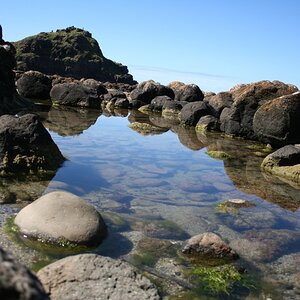
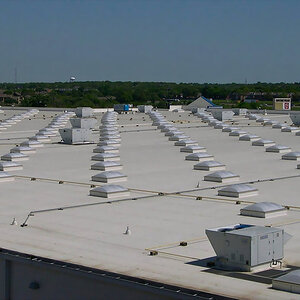


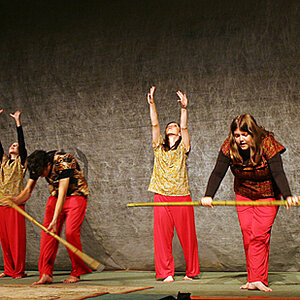


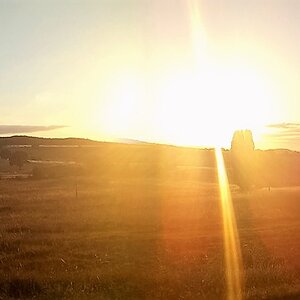

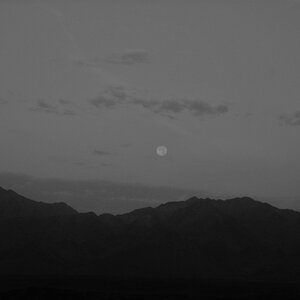

![[No title]](/data/xfmg/thumbnail/31/31045-f4eb92f5d5eaca89ec5966763eea2dae.jpg?1619734585)